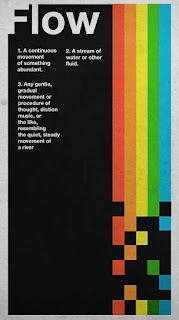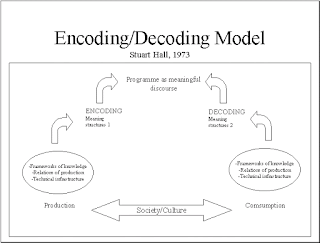Visual Design and the art of persuasion
In today's session we looked at the art of persuasion and semiotics within branding and advertising.
 - Ferdiand de Saussure suggested that within an image there is a signifier
- Ferdiand de Saussure suggested that within an image there is a signifierand that all things can have a denotation and connotation. The denotation of a representational visual image is what all viewers from any culture and at any time would recognise the image as depicting, while Roland Barthes explains that for a connotation, you require cultural knowledge. Barthes took images from texts and analysed these. For example this picture of a bitten. Although the primary meaning of this image is simply an apple, those with a cultural understanding would identify this as the Apple logo.
'Rhetoric of the image'
 For example, the image here suggest food, specifically Italian cuisine with the bag containing pasta, cheese and fresh vegtables, and as this is all contained in a string shopping bad, it further suggest that perhaps it has just been bought in a shop. The colours red, white and green in the image reinforce the theme of Italy as these are the colours associated with the Italian flag.
For example, the image here suggest food, specifically Italian cuisine with the bag containing pasta, cheese and fresh vegtables, and as this is all contained in a string shopping bad, it further suggest that perhaps it has just been bought in a shop. The colours red, white and green in the image reinforce the theme of Italy as these are the colours associated with the Italian flag.The logo featured on the packaging suggests this is an advert, especially as the labels are perfectly placed to face the audience.
Persuasion
...the process of steering someones beliefs or attitudes towards a particular idea or set of beliefs. The influence of colour, type and semiotics all impact this process of persuasion.Other techniques into the art of Persuasion include;
simplicity - brands use simplicity to convey a clear message/ getting you to do/ think something
trigger emotion
typography- the art and technique or arranging type to make written language legible, readable, and appealing when displayed
"The visual component of text is an independently organised and structured message, connected with the verbal text, but in no way dependent on it and similarly the other way round." Reading Images: The Grammar of Visual Design
typography is an important factor as aspect of deign sets the mood for the thing you want to present to the viewer. Typography is also used in film titles to convey the film.
Colour must also be considered in branding as colour can be very suggesting and often there are various developed meanings. For example the colour red can have many connotations such as anger, love, passion, or Christmas.
The 'Designers Guide to Gestalt Theory' suggest that there are four components which designers use to engage their audience, these consist of;
- Similarity- use of similarity to take one thing- to suggest another.
- Proximity- the use of close proximity to make one thing look like another thing
- Continuity- meant to suggest consistency- each one is the same good quality
- Closure- where things are left out- though our brains fill in the gaps
Task
Using Photoshop, I have tried to create my own coded message deign for the dating app Tinder. The logo includes an arrow which points right to signify the action of 'swiping right' to find your match. Directly underneath is a negative image of a couple holding hand to clearly suggest this is for a dating app.This is all placed inside an emojicon of a flame to reinforce that the logo is primarily a mobile application as the flame emoji is mostly identified with mobile users. Though a flame has the denotation of something that is hot with bright stream of burning gas that comes from something that is burning, it also has many connotations related to relationships.




Comments
Post a Comment